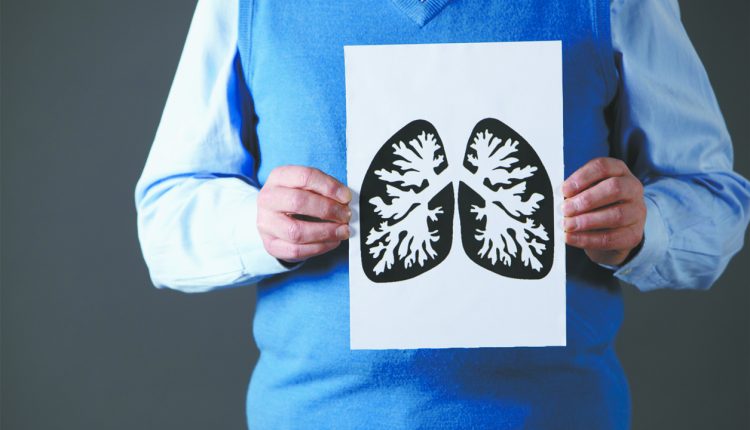
Breast Cancer Awareness month ended in October and so did all the campaigns, symposiums, survivor stories and other awareness events. As everyone puts away their pink ribbons, very few people know that November is Lung Cancer Awareness month and this cancer also deserves some time in the spotlight as it is one of the deadliest cancers.
Here are a few important facts and figures about Lung Cancer that you must know about:
1. Lung cancer has the lowest 5-year survival rate compared to the other common cancers: only 18% (compared to prostate at 99%, breast at 90%, and colorectal 65%)
Although breast cancer is the most commonly diagnosed cancer in women and prostate cancer is the most commonly diagnosed cancer in men, both these cancers respond well to treatment, giving patients a better chance of survival than lung cancer. While tumors of the breast, prostate and colon can be surgically removed, lung tumors may be situated deep inside the lung, making them very difficult to remove, or even biopsy in some cases.
RELATED: Lung Cancer
2. Radon causes about 21,000 lung cancer deaths each year, making it the second leading cause of lung cancer death.
Lung cancer is almost always attributed to smoking, but there are other factors, such as Radon, which remain unheard of. Radon is a naturally occurring radioactive gas, found in rocks, soil and water. Outdoors it does not have any serious effects, but if it leaks into poorly-ventilated buildings its particles can deposit in the airways of people living there and cause lung cancer.
Not many home owners are aware of the radon concentration of the air inside their homes and measuring systems are not widely available.
3. Early detection, by low-dose CT screening, can decrease lung cancer mortality by 14%-20% among high-risk populations.
Screening the healthy population for underlying cancer in its initial stages has proven very helpful in reducing the incidence of breast cancer, prostate cancer or colorectal cancer worldwide.
Low dose CT screening has also shown to decrease mortality of lung cancer, but many people do not opt for this diagnostic modality due to its high cost and unavailability in basic healthcare settings.
RELATED: Lung Cancer: Mobile App Could Extend Life Expectancy
4. Only 16% of people will be diagnosed in the earliest stage, when the disease is most treatable.
The main reason behind the low survival rate of lung cancer patients is that the early symptoms of disease are non-specific. Patients usually attribute a chronic cough, weakness or loss of weight to a minor chest infection and postpone getting a clinical opinion. When they do visit a doctor, smaller lesions are often missed in routine X-rays and physicians send these patients home on antibiotics. Unfortunately, CT scans are performed when signs and symptoms indicate wide-spread disease and by the time the case is diagnosed, the cancer may have spread to the bones or brain.
5. Employees who smoke cost their employer nearly $6,000 more each year compared to nonsmoking employees.
While factors like air pollution and radon exposure are difficult to control at an individual level, cigarette smoking is a habit which has to be discouraged at every front. In some countries, employers avoid hiring candidates who smoke as figures show that these individuals increase the financial burden on the organization due to their chronic medical issues.
With the growing air pollution all over the world, the incidence and mortality rate of lung cancer may rise drastically in the near future.
Beginning from this year, let’s make it a habit to remember that when we put away the pink ribbons, we should take out the pearl ribbons and join the effort to inform and educate others about this deadly disease, as each and every one of us may be at risk.
References : https://www.lungcancerfoundation.org/about-us/lung-cancer-facts/

